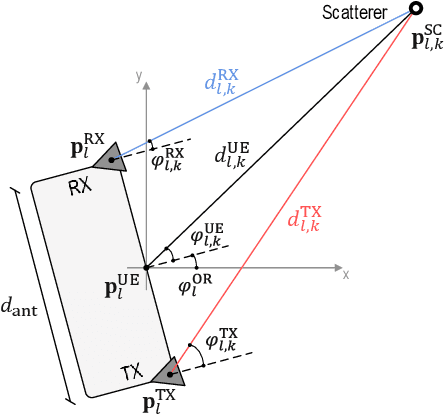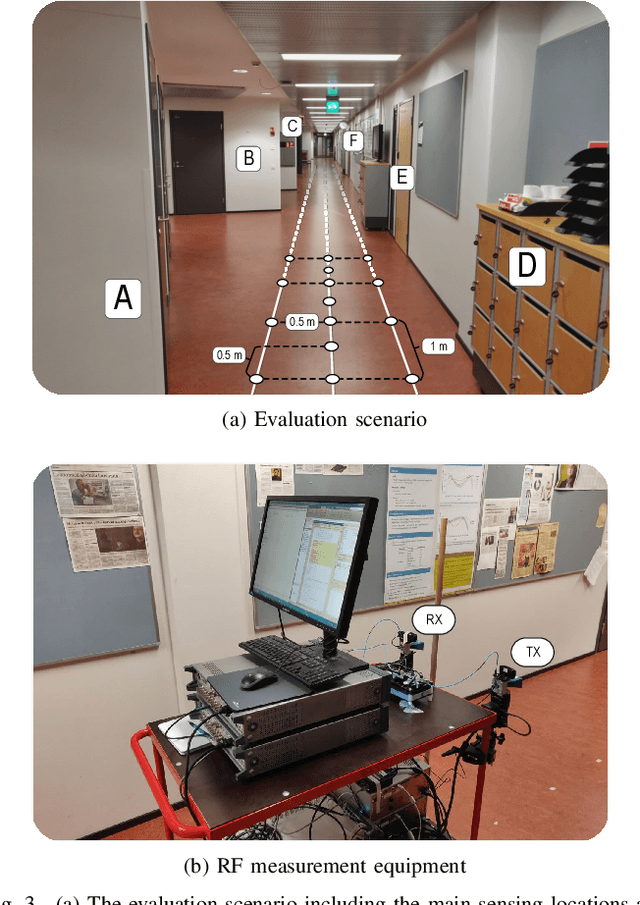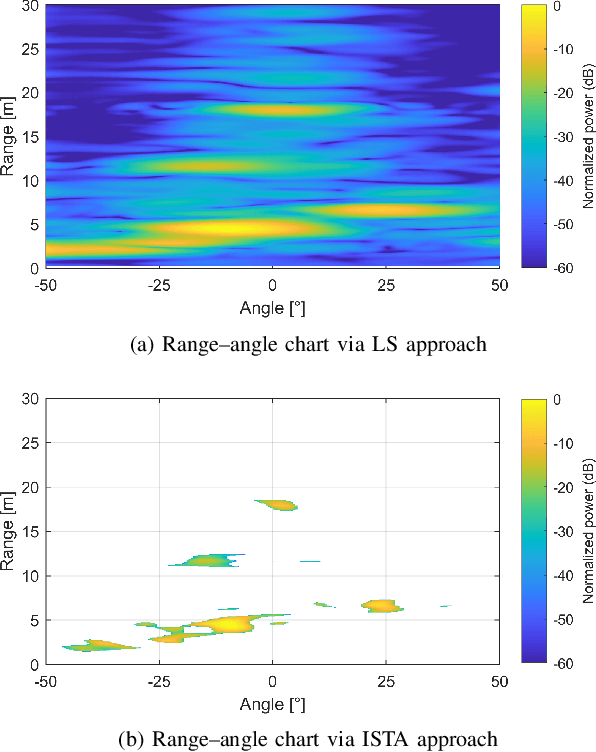Radio-based Sensing and Environment Mapping in Millimeter-Wave 5G and Beyond Networks
Paper and Code
Feb 23, 2021



Integrating efficient connectivity, positioning and sensing functionalities into 5G New Radio (NR) and beyond mobile cellular systems is one timely research paradigm, especially at mm-wave and sub-THz bands. In this article, we address the radio-based sensing and environment mapping prospect with specific emphasis on the user equipment (UE) side. We first describe an efficient l1-regularized least-squares (LS) approach to obtain sparse range--angle charts at individual measurement or sensing locations. For the subsequent environment mapping, we then describe both grid-based static solution as well as more advanced tracking-based dynamic approaches, where interaction multiple-model extended Kalman filtering and smoothing are utilized. We provide numerical indoor mapping results at 28~GHz band deploying OFDM-based 5G NR uplink waveform with 400~MHz channel bandwidth, covering both accurate ray-tracing based as well as actual RF measurement results. The results illustrate the superiority of the dynamic tracking-based solutions, while overall demonstrate the excellent prospects of radio-based environment sensing and mapping in future mm-wave networks.
 Add to Chrome
Add to Chrome Add to Firefox
Add to Firefox Add to Edge
Add to Edge